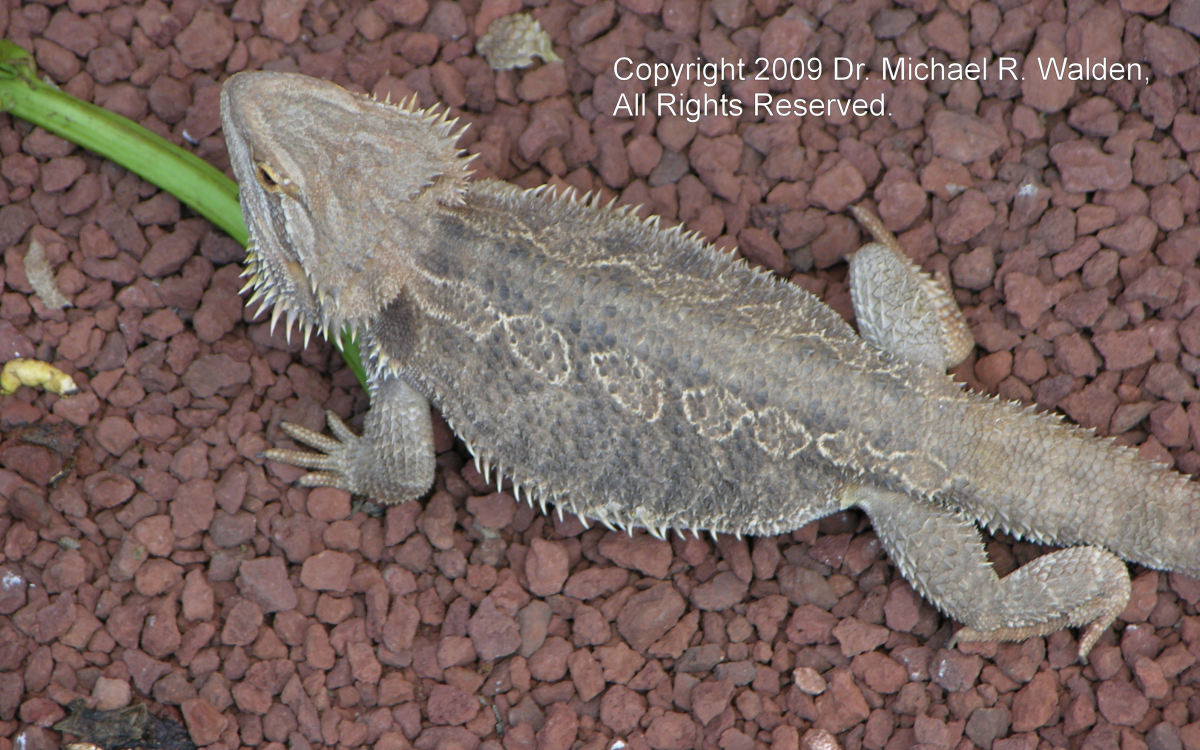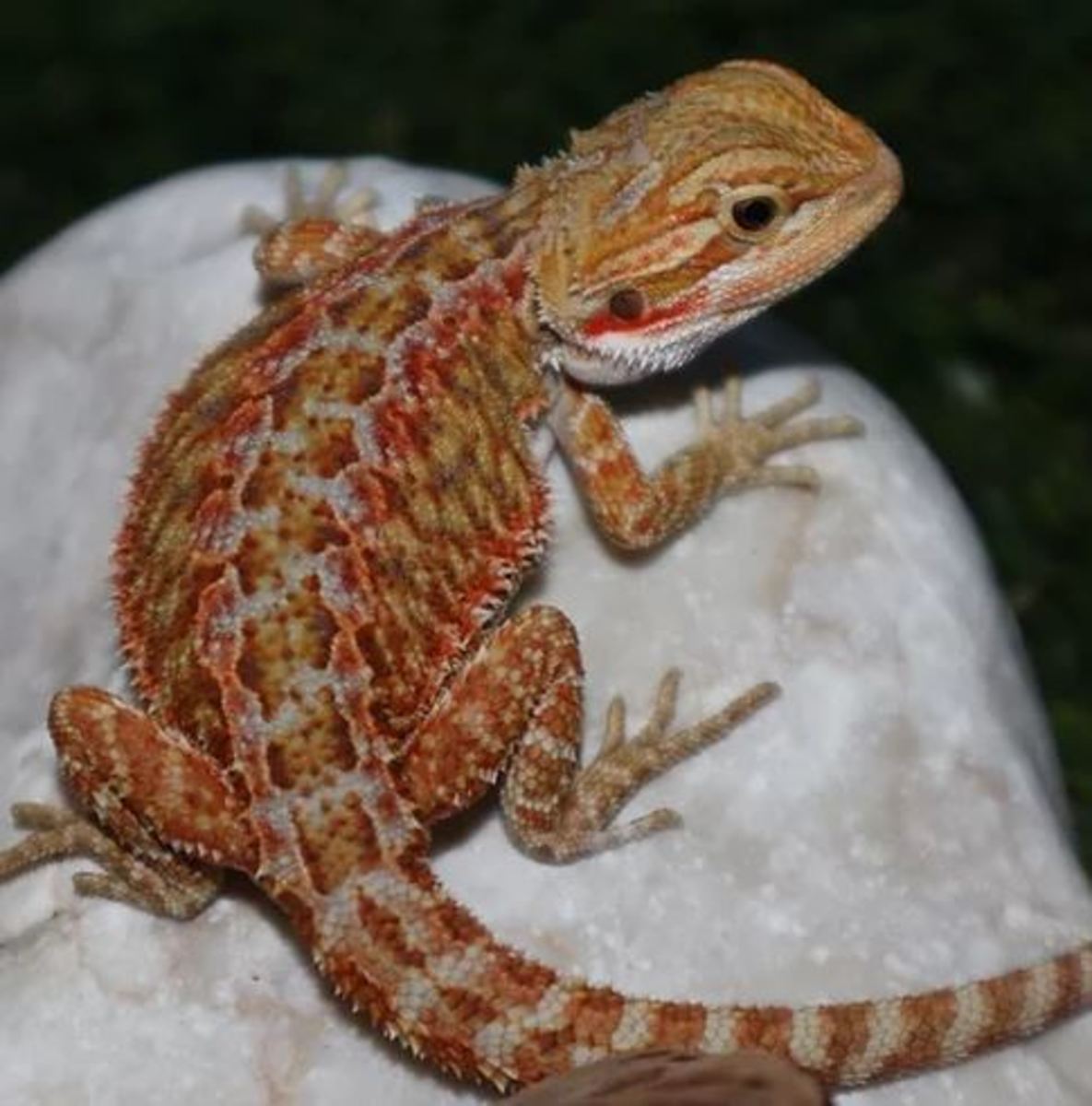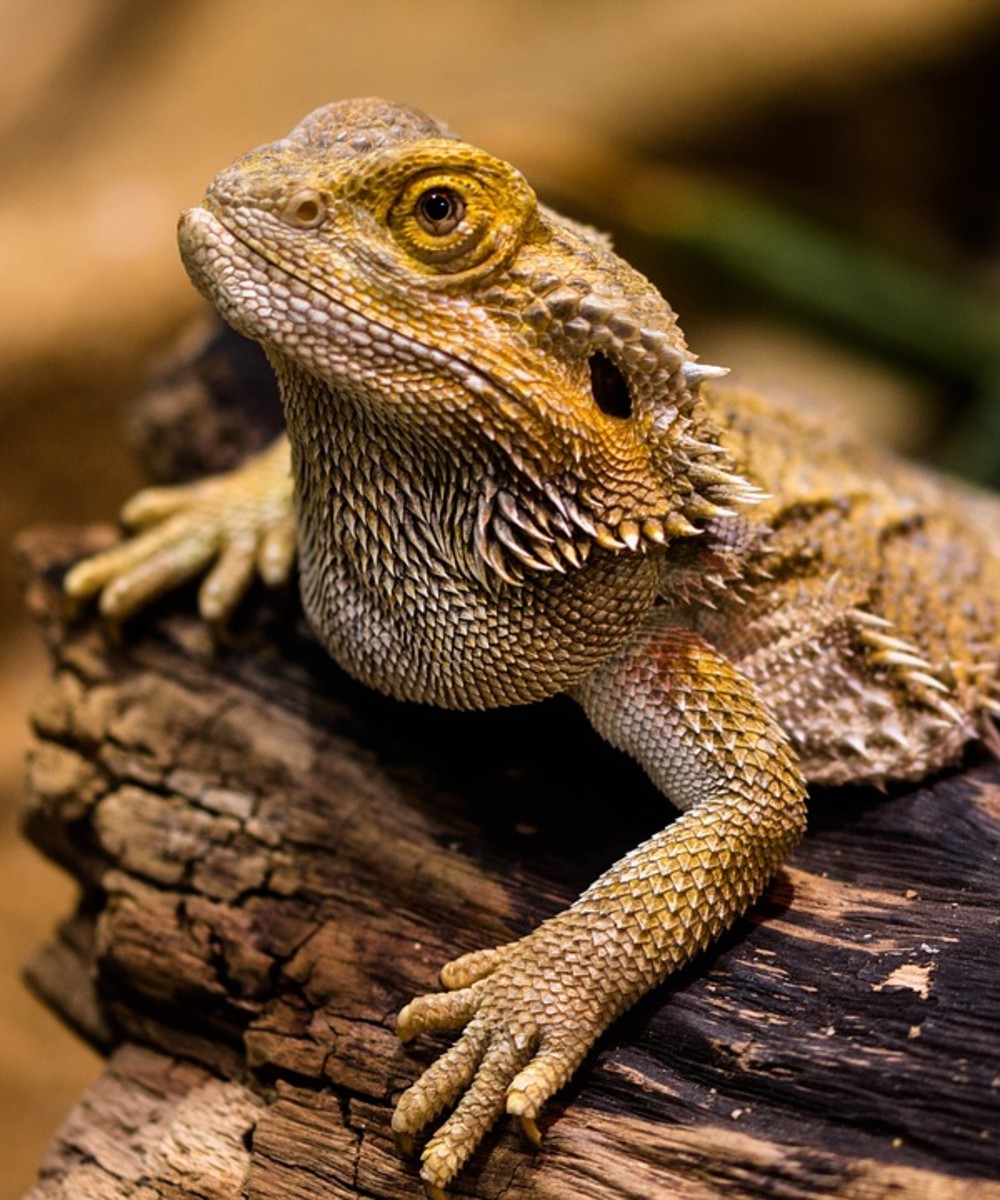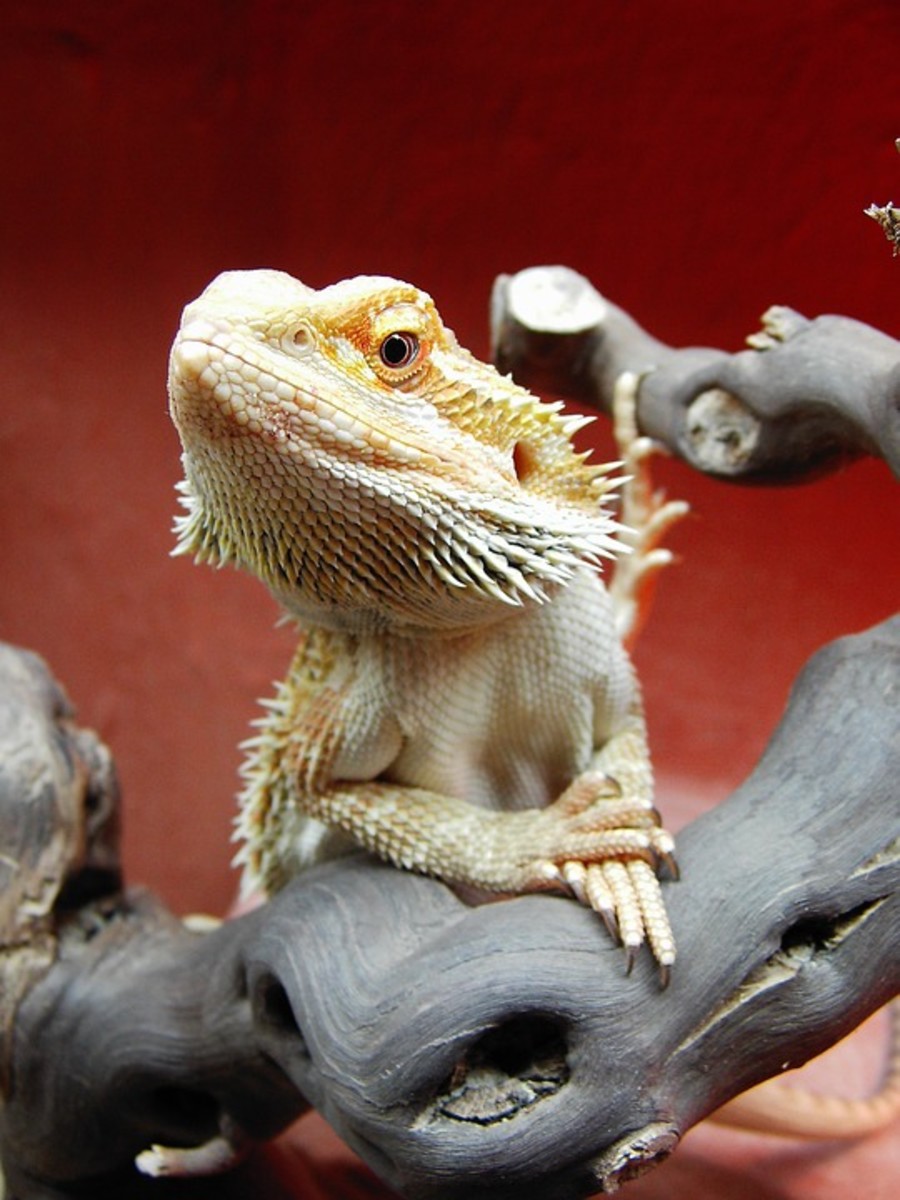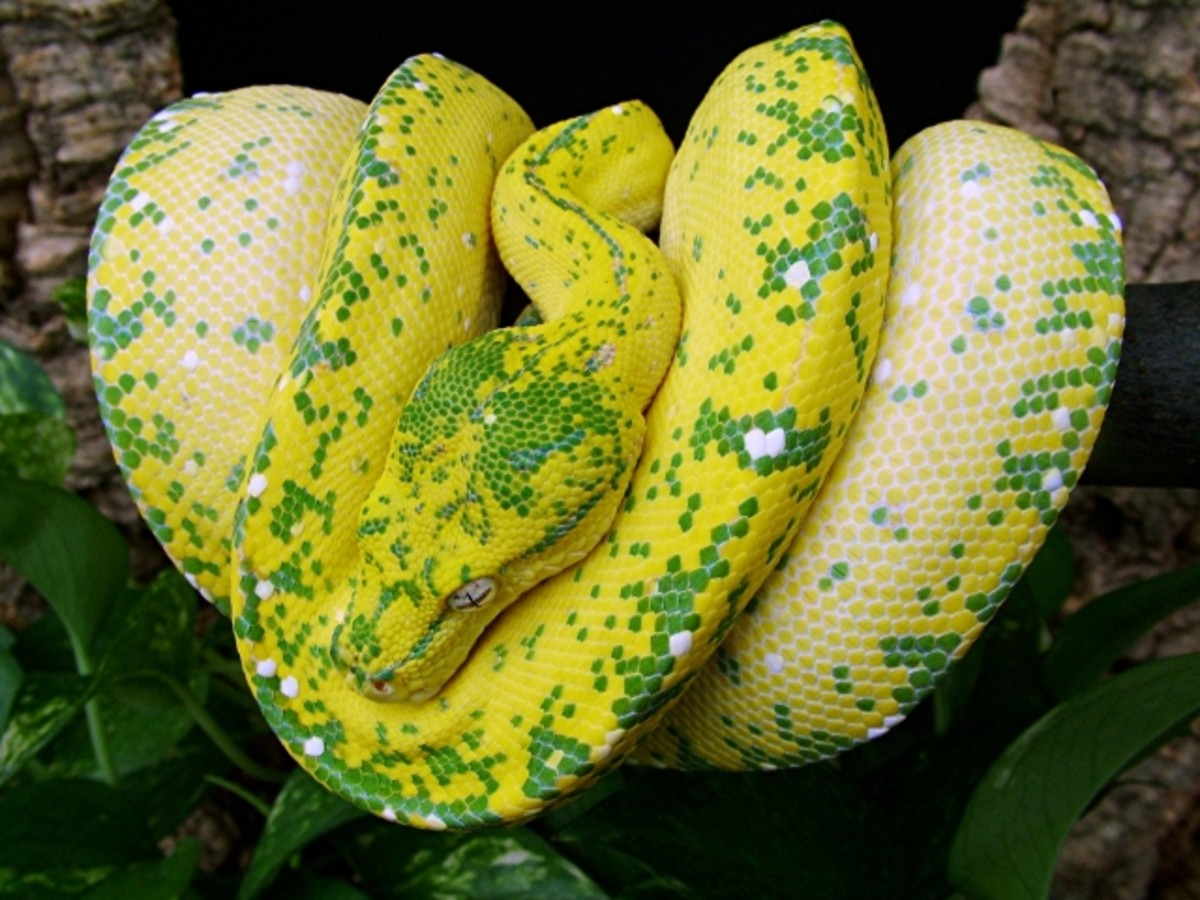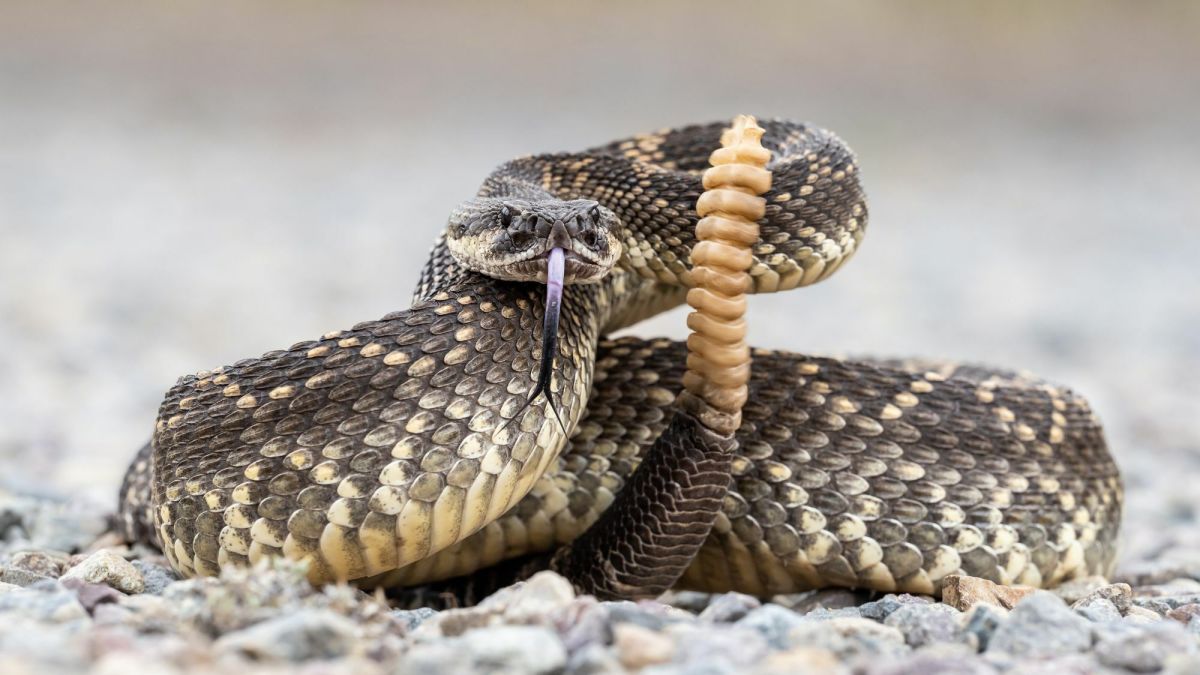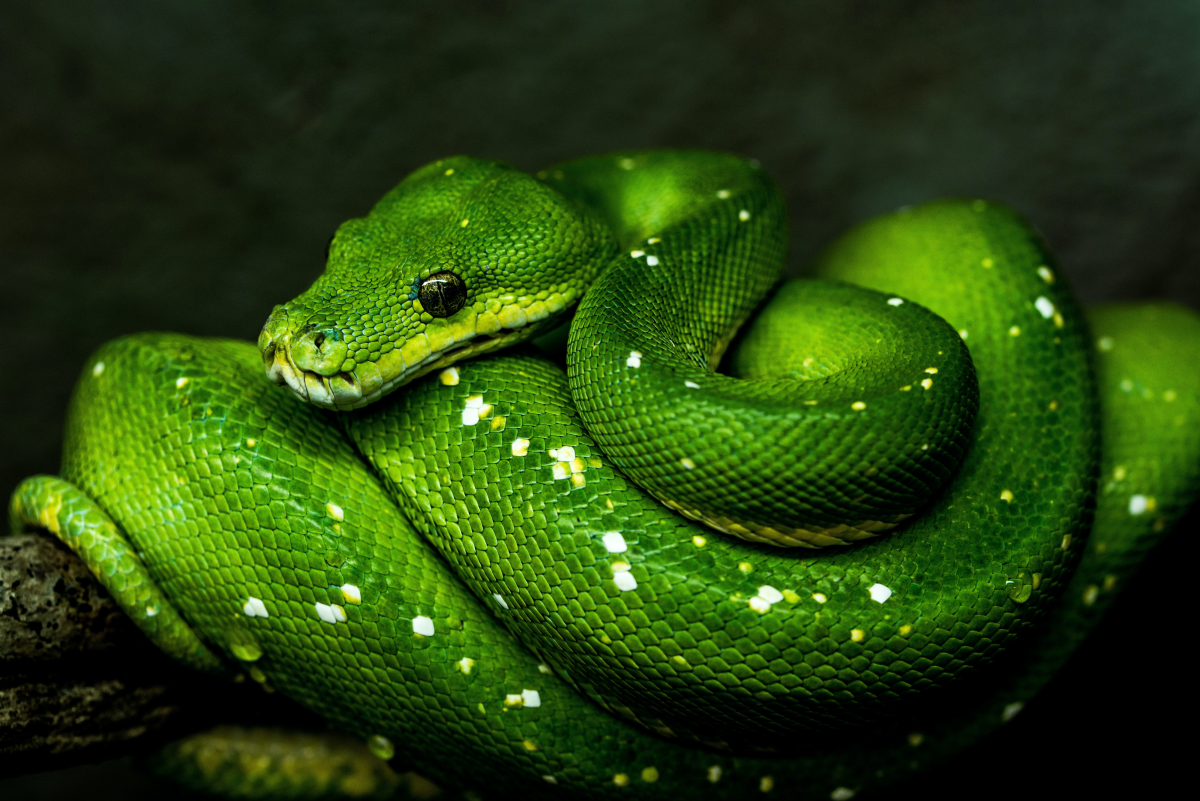Different Bearded Dragons Colors

Bearded dragons are available in many different colors. They were predominantly gray-brown in color. There were also bearded dragons with dark gray or black colored grain. Bearded dragons can now be found in numerous color variants, thanks to targeted breeding. Colored bearded dragons could be very expensive as compared to the ordinary colored dragons. Below is the list of different bearded dragon colors.
Overview of the species and their color variants:
Sand Fire
The color variant Sandfire is probably the most widespread and most popular color variant of bearded dragons. It was bred for the first time on the Sandfire Dragon Ranch in America. The name of this color variant "Sandfire" is a protected term. Therefore, offspring are only real if they come from the American Sandfire - Dragon Ranch. Only breeding of the American Sandfire dragons may be called that way.
Snow
The snow variant is predominantly white with striking golden eye rings. Freshly hatched reptiles are translucent pink and take on a translucent beige color within a few days. With each moult, they are now brighter until they are almost white with about 4 months with hardly visible drawing. White, until gray shimmering bearded dragon breeds are sold under the name "Snow". The reptiles have either no or only a very light drawing. A striking feature of the Snow Breeding is the yellow-orange ring around the eyes of the Snow Bearded Dragons.
Sunburst (Yellow Sunburst)
Color variant from the USA, which are mainly yellow (80-90%). The color variant called "Sunburst" was first bred in the US as well. Breeder and inventor of this color variant is Kevin Dunne. The Sunburst Bartagamen color variant is mostly yellow. In addition, they also iridescent with orange and red colors.
Chris Allen Red
This color variant was given the name of the first breeder to the American Chris Allen, and additionally by the red color of the reptiles. The bearded dragons of this breeder are wonderfully dark red throughout. The color variant has a high content of magenta.
Blood
Originally called Blood only the (blood-red reptiles) that is the most intensive Fabvariante the red reptiles. These are actually from the USA. Not everything that is reddish colored must be like a blood. This name is also often misused to achieve more profit when selling. If you want to be aware of having a blood or blood ancestry, get a certified reptile out. The young reptiles of the color form "Blood" wear a really attractive, very dark red grain. However, the dark red color is usually not long lasting. With increasing age of the reptiles, this color changes more and more in the color direction of a dark brown tone. This cross is from the breeder Kevin Dunne from the United States.
Salomon Hypo
Also this color variant comes from the USA and again by Kevin Dunne. This zookeeper has also bred the color varieties "Sandfire" and "Snow". The variety Salomon Hypo shines with a pink - lavender - looking coloring. In the adult growth stage, however, they usually become patternless.
Citrus
These correspond to the color morph and are, as the name implies, completely yellow. A drawing by black pigments is barely or not available. The Bartagamen Farm Fire & Ice Dragons has produced the color variant "Citrus" or "Citrus Color Morph". This color variant comes from the esteemed American breeders Terri Sommella and Adam Seltzer. The adult reptiles of Fire & Ice Dragons of the color "Citrus" have a brilliant yellow color. In some cases, even a slight greenish tint is visible. The claws of Citrus Bearded Dragons are light and very clear. The young Citrus bearded dragons usually look bright orange or even red colored. The color conversion takes about a year.
Leatherback
Leatherback has a leathery skin that is not as prickly and scaly as common bearded dragons but smoother. This is like the Silkbacks a Überzüchtung. Leatherback is not a color variant in the true sense. This name is used for bearded dragons whose scales are clearly smaller than the normal ones. The Leatherback scales are hardly recognizable. The skin of Leatherback Breeding looks almost leathery. You could also compare it to the snake skin. The breeds of Leatherback bearded dragons are rare rarities and they come from the USA.
German giant
The origin of the so-called "German Giants" is unfortunately no longer exactly comprehensible. It would be obvious that it is a cross between the species Pogona vitticeps and Pogona barbata. The largest species share is probably to be assumed in the genus Pogona. The name "German Giants" results from the fact that the reptiles are a lot bigger and also much heavier than the average bearded dragons. They reach a stately overall length of about 60 to 70 cm. Although the name German Giants suggests otherwise, the rearing comes mainly from America. In Europe it is not so easy to get at this variant. In this country you have to be careful with this breeding of the German Giants, because often one is only offered a completely over-nourished and much too expensive reptile.
Nominat
This is not a special breeding form but only the wild form. These reptiles mainly have a basic gray coloration with black mass, some also have a slight brown or occa hue. Out of these reptiles all other color forms have been bred out.
Translucent
These reptiles are easily recognized by their genetic defect, they have a bluish "translucent" belly. Young reptiles show this defect best because the skin thickens during the aging process but the transparent appearance is always preserved. The genetic defect is caused by the absence of white pigments. Earlier, the Transöucent bearded dragons lost their color as they grew older and then looked like nominates, this is no longer the case today.
Leucistik
Leucistik can be recognized by the clear or transparent nails and that these reptiles are often very bright (white or with a slight yellowish tinge). In addition, they have no visible black pigments and even in the cold state these are barely recognizable. You can also see little or no drawing due to the lack of black pigments.
Pastel
As the name implies, this designation does not mean intense color, but rather a subtle, paler-looking color. Red looks more like pink, yellow and orange more apricot.
Pattern less
This means that the reptiles have no drawings on their backs.
Tiger
As the name implies, reptiles with this drawing have spread across the torso and limbs.
Stripped
These reptiles clearly have longitudinal stripes on their backs parallel to the spine.
Hypo
Like "leucist": in most of the body no melanin is present, eg. Reptiles with black eyes. The transport of the pigment in the cells is disturbed. Not to be confused with "albinotic": there is no melanin present, as in the case of white tigers with red eyes, because there the pigment is not produced at all. That's why hypo's always have clear nails. These are very colorful reptiles, often with recognizable blue sidebars.
Hypo Translucent
Some breeders have bred so-called hyptranslucent bearded dragons, which means a 100% hypo with the properties of a 100% Translucent.
Red
Red bearded dragons can range from slightly pink to bright red. You should not only rely on description and photos, but rather look at the reptile in person to convince yourself of the intensity of the color. Often, the colors show only after the first moulting and is also still mood and age dependent. Much to contribute, however, does the right lighting (UVA / UVB).
© 2018 beardeddragonsz

